Waqrapukara, an archaeological treasure that stands majestically in the province of Acomayo, in the south of the Cusco region. On our tour of this exceptional site, we will explore the rich history, unparalleled architecture and breathtaking landscapes that make Waqrapukara an incomparable destination. Are you ready to immerse yourself in the horn-shaped fortress?
The horn-shaped fortress
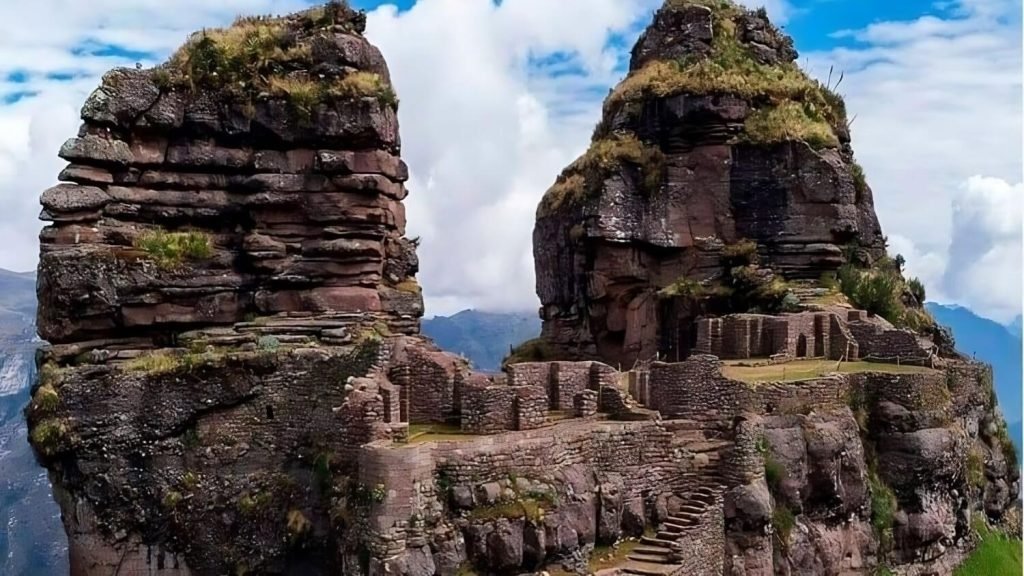
Waqrapukara, a Quechua word that translates as ‘Fortress in the shape of a horn‘, reveals the essence of this archaeological site. Its name comes from the imposing rock formations that resemble two horns at the top of the mountain. This enclave, unlike other Inca complexes in Cusco, has remained in relative anonymity, waiting to be discovered by intrepid travelers.
Religious Sanctuary or Strategic Fortress
The fine granite stone constructions indicate that Waqrapukara was initially a religious sanctuary. However, the presence of huge rocky horns and its strategic location at the top of the mountain also suggest a defensive function. From afar, Waqrapukara’s silhouette resembles a formidable castle, defying the passage of time.
Investigations and Mysteries
Recent investigations by Cusco archaeologist Miguel Colque Enriquez have provided valuable information, although the true importance of Waqrapukara remains a mystery. Several Inca roads leading to this site, along with the presence of other Inca enclosures along the route, suggest its relevance as a religious and pilgrimage center.
Location and Access Routes
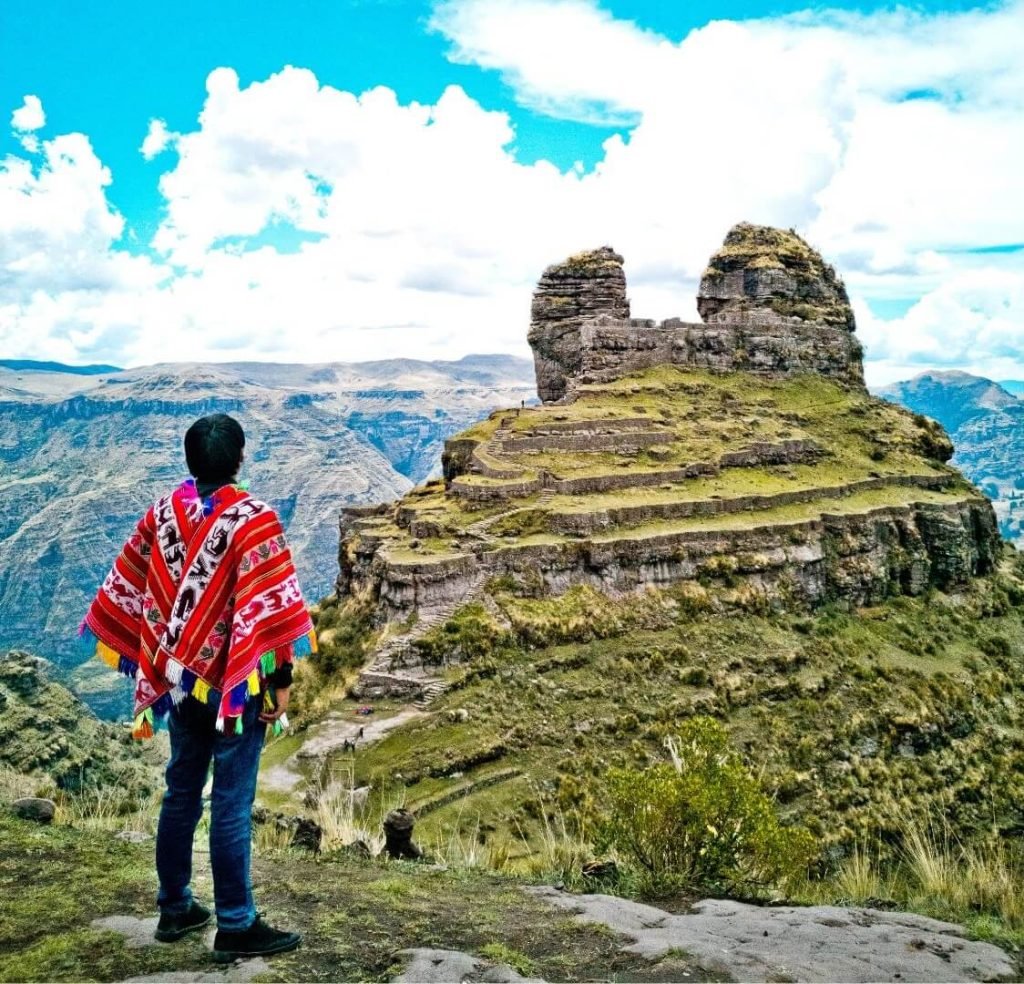
Location
Waqrapukara is located in the province of Acomayo, about 2 hours and 30 minutes by car from the city of Cusco. Its impressive altitude of 4,300 meters above sea level offers panoramic views of the Apurimac River canyon. This site, nestled on a mountain road, provides a unique experience for those seeking to explore Inca grandeur.
Routes for Adventurers
There are three routes to reach Waqrapukara from Cusco, each offering a unique perspective of the landscape:
- Sangarará Route: A 15-kilometer hike from the village of Sangarará.
- Huayqui Route: A 7.5 kilometer hike from the community of Huayqui.
- Route through Santa Lucía: A 2-hour hike from the community of Santa Lucía.
These routes, steeped in the history of ancient Inca trails, add an element of adventure to the journey to Waqrapukara.
Origins and Constructions
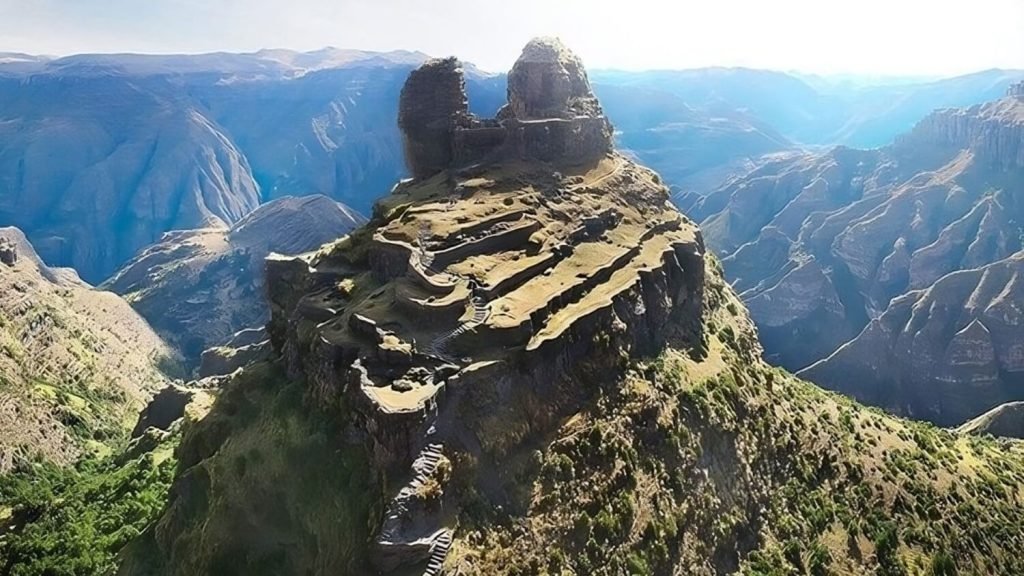
From the Canchis to the Incas
Waqrapukara, initially built by the Canchis culture, marked the territorial conflict between the Canchis and the Incas. After the Inca vs. Chanca war, the Canchis joined the Incas, forming part of the Tahuantinsuyo empire. The precise date of construction remains an enigma, but it is estimated that during the government of Tupac Yupanqui the temples and main terraces were erected.
Unique Architecture
One of the most outstanding aspects of Waqrapukara is the presence of temples with three jambs, located on the highest part of the stone mounds that form the horns. This unique architectural structure, shared only with other important Inca sanctuaries, reveals the mastery of Waqrapukara’s builders. The central cavern in the upper structure adds a touch of mystery to the architecture.
Exploring Waqrapukara
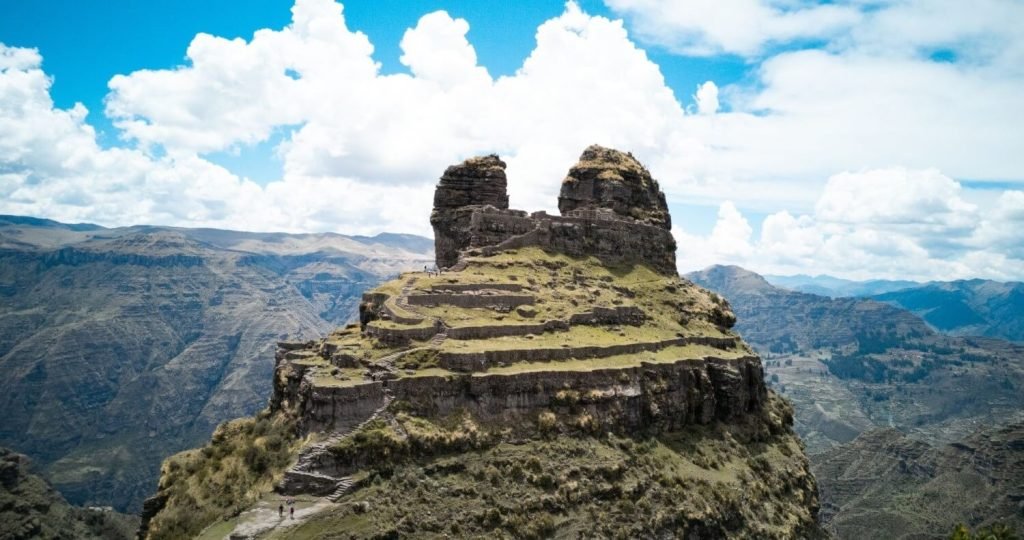
Tours and Experiences
Waqrapukara tours offer a unique opportunity to explore this exceptional site. The 1-day packages, ranging in cost from $60 to $80, provide transportation, lunch, entrance fee, tour guide and everything needed for the hike. For adventurers looking for a more complete experience, 2-day tours include a night camping next to the archaeological site, with prices ranging from $140 to $200 per person.
Alternative: Independent Travel
Waqrapukara is also accessible for those who wish to explore on their own. Taking public transportation from Cusco to Sangarará, travelers can begin the hike to the archaeological site. The return trip follows the same route, providing a more intimate experience with the majesty of Waqrapukara.
Practical Advice
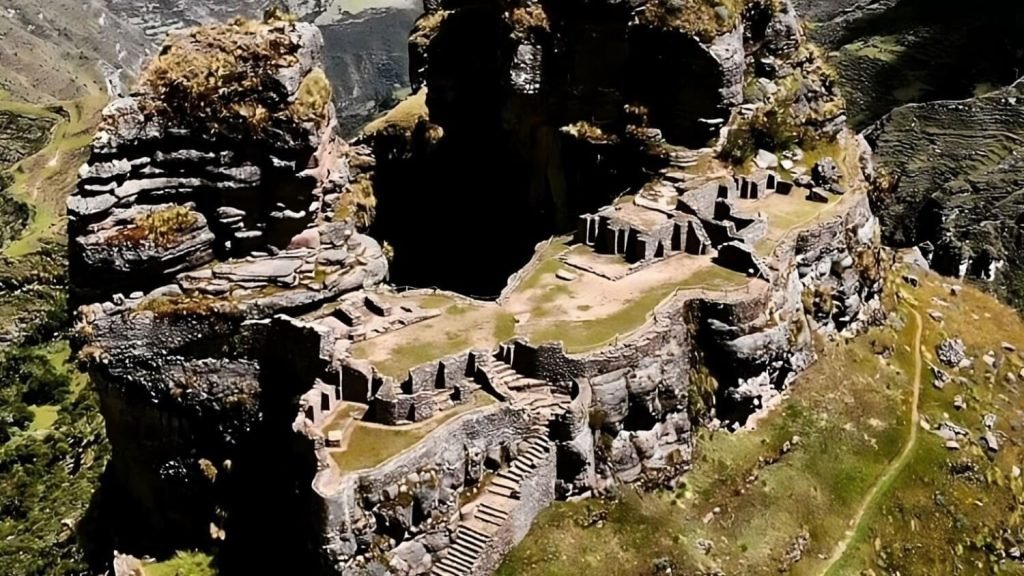
Recommendations:
- From the top of Waqrapukara, winds are strong, and the temperature can range from 23°C during the day and drop to 0°C at night.
- It is recommended to bring appropriate clothing, including a windbreaker, comfortable pants and sturdy sneakers. The hike follows ancient Inca routes, adding a touch of history to the experience.
Best Time to Visit
- The ideal time to explore Waqrapukara is during the low rainfall months of May through October. During January, February and March, the constant rains can make hiking difficult. Planning your visit accordingly ensures a more comfortable and safer experience.
Waqrapukara awaits discovery by those seeking to immerse themselves in the grandeur of Inca culture. Its unique combination of history, architecture and breathtaking scenery offers an unforgettable experience.





